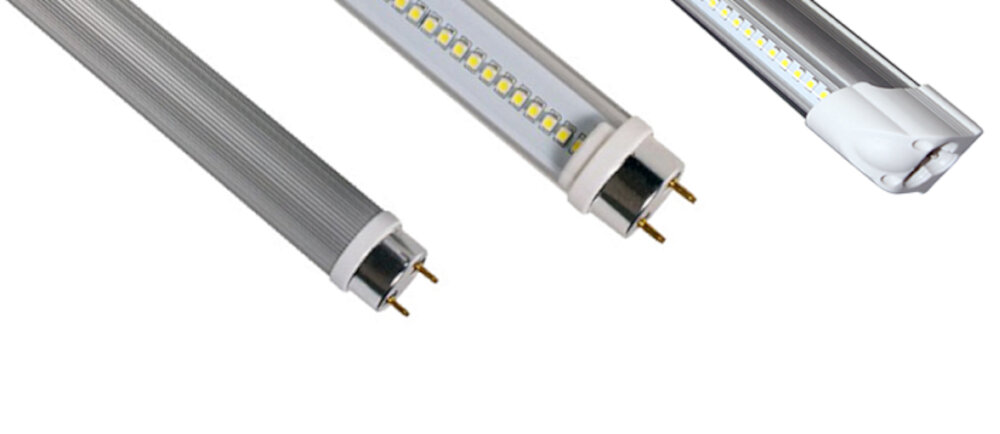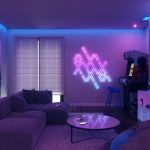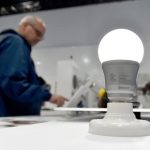StepbyStep Guide: How to Easily Connect LED Light Strips to Your Car

Are you tired of your car’s boring interior and looking for a way to add some personality and style? LED light strips can be an excellent solution to add some flair without breaking the bank. Not only do they add a touch of ambiance, but they can also improve visibility during nighttime driving. However, the idea of installing LED light strips may seem daunting to some, especially if you’re not familiar with electrical wiring. Fear not, as this step-by-step guide will walk you through the process of connecting LED light strips to your car with ease. Before beginning the installation process, it’s essential to gather all the necessary tools and materials. You’ll need LED light strips, a power source such as a fuse box or cigarette lighter, an adhesive tape or clips to secure the strips, a wire cutter/stripper, and electrical tape. It’s crucial to purchase LED light strips that are compatible with the voltage of your car’s battery to avoid any electrical malfunctions. Once you’ve gathered all the necessary items, you’re ready to begin the installation process.
LED light strips have become increasingly popular in recent years, especially when it comes to car modifications. These strips are versatile and can be used to make your vehicle stand out, whether you want to create a unique interior ambiance or add some flair to the exterior. LED light strips are energy-efficient, long-lasting, and come in a variety of colors, making them an excellent choice for car enthusiasts who want to customize their ride. In this step-by-step guide, we will show you how to easily connect LED light strips to your car, so you can enjoy the benefits of this trendy and functional modification.
Gather Your Materials

Gathering your materials is the first step in connecting LED light strips to your car. It is important to have all the necessary materials before starting the installation process to avoid any delays or complications. Firstly, you will need to purchase LED light strips that are compatible with your car’s voltage and have the appropriate length for your desired placement. Make sure to measure the area where you wish to install the LED strips to avoid buying strips that are too short or too long. Additionally, you will need a power source such as a fuse tap or a cigarette lighter adapter to power the LED strips. Other necessary materials include wire connectors, electrical tape, and a wire stripper. Having all these materials ready before starting the installation process will make the process smoother and easier, allowing you to focus on the installation itself. In addition to the basic materials, you may also need additional tools depending on the complexity of your installation. For example, if you plan to install the LED strips in hard-to-reach areas, it may be helpful to have a panel removal tool to access those areas. If you are unsure about which tools you may need, it is recommended to consult with a professional or to research online tutorials for guidance. Remember, having all the necessary materials and tools will make the installation process much easier and will ensure that your LED light strips are installed correctly, providing you with a beautiful and functional lighting system for your car.
When it comes to connecting LED light strips to your car, it’s essential to have the right materials to ensure a safe and effective installation. First and foremost, you will need the LED light strips themselves, which come in a variety of lengths, colors, and styles. Additionally, you will need a power source, such as a 12-volt power supply or a car battery, to power the lights. To connect the lights to the power source, you will need wires, connectors, and a fuse tap to ensure safe and secure electrical connections. Finally, you will need mounting clips or adhesive tape to attach the light strips to your car’s interior or exterior surfaces. With these materials in hand, you can confidently and easily install LED light strips on your car, adding a custom and eye-catching touch to your vehicle.
When installing LED light strips in your car, it’s crucial to prioritize safety precautions to avoid any potential harm. One of the most important safety measures you should take is disconnecting the car battery. This is because the electrical wiring of the LED light strips is directly linked to the battery, and any electrical mishap can cause severe damage to the car or even result in an injury. By disconnecting the battery, you eliminate the risk of any electrical shocks or short circuits. Moreover, ensure that you follow the manufacturer’s instructions and use appropriate tools to install the LED light strips to avoid any further risks. These safety measures may seem excessive, but they can spare you from any potential accidents and ensure that your LED light strips are installed correctly and efficiently.
Plan Your Installation

When it comes to installing LED light strips to your car, planning is key. Before you start the installation process, take some time to plan out where you want to place the LED light strips and how you want to power them. This will help ensure that the installation process goes smoothly and that you end up with a professional-looking result. Consider the placement of the LED light strips carefully, taking into account the size and shape of your car as well as any potential obstacles or obstructions. You may want to start by sketching out a rough plan of where you want to place the LED light strips, taking measurements and noting any areas where you may need to make adjustments or modifications. In addition to planning the placement of the LED light strips, you’ll also need to consider how you want to power them. Some LED light strips can be powered directly from your car’s battery or through a cigarette lighter adapter, while others require a separate power supply. Take some time to research the various power options available and choose the one that works best for your needs. Keep in mind that some power sources may require additional wiring or modifications, so be sure to plan for these as well. By taking the time to plan your installation carefully, you’ll be able to avoid common mistakes and ensure that your LED light strips are installed correctly and safely.
Before installing LED light strips on your car, it is important to plan where they will be placed to achieve the desired effect. Start by identifying the areas where you want to install the strips, such as the headlights, taillights, and undercarriage. Next, consider the length of the LED strips you will need for each area and whether you will need to cut them to fit. It is also important to ensure that the power source for the LED strips is easily accessible and that you have the necessary tools and materials to install them securely. By taking the time to plan the placement of your LED light strips, you can create a customized and visually stunning lighting effect for your car.
To ensure a successful installation of LED light strips on your car, accurate measurements and markings are crucial. Use a measuring tape to determine the length of the area where you want to install the lights. Mark the starting and ending points with a pencil, and use a level to make sure your markings are straight. Clean the area where the lights will be installed with rubbing alcohol to remove any dirt or debris that may interfere with the adhesive. Use a ruler or straight edge to mark where the LED light strips will go, making sure to leave enough room for any connectors or wires. Taking the time to properly measure and mark the installation area will save you time and frustration in the long run.
Connect the LED Light Strips

Connecting LED light strips to your car can be a fun and exciting way to add some extra flair to your vehicle. Whether you’re looking to enhance the interior or exterior of your car, LED light strips are a great option to consider. However, it’s important to follow the proper steps to ensure that the installation process goes smoothly. One of the key steps in the process is connecting the LED light strips. To connect LED light strips to your car, you’ll need to first determine the type of connection that your specific LED light strips require. Some LED light strips may require a direct connection to your car’s battery, while others may be designed to connect to a fuse box or cigarette lighter. Once you’ve determined the type of connection required, you can then begin the process of connecting the LED light strips. This typically involves connecting the positive and negative wires of the LED light strips to the corresponding wires of your car’s electrical system, using wire connectors or soldering tools as needed. With the right tools and techniques, connecting LED light strips to your car can be a simple and rewarding process.
Connecting LED light strips to a car’s electrical system can add a stylish touch to the vehicle’s interior. The process is relatively simple and can be done by anyone with basic knowledge of car wiring. First, gather the necessary tools, including the LED light strip, wire cutter, wire stripper, and electrical tape. Next, locate a power source, such as the fuse box or battery, and connect the wires from the LED strip to the power source. Ensure that the wires are properly connected and secure them with electrical tape. Finally, test the LED light strips to ensure they are functioning correctly. With these easy steps, anyone can add a unique touch to their car’s interior with LED light strips.
Properly grounding the LED light strips is crucial for the safety and longevity of your vehicle’s electrical system. To do this, you will need to find a suitable grounding point on your car’s chassis, such as a bolt or screw that is connected to the metal body. First, make sure to clean the area around the grounding point to ensure a good connection. Then, attach the ground wire of the LED light strip to the grounding point using a ring terminal or a self-tapping screw. It’s important to avoid grounding the LED light strip to any plastic or non-metallic surfaces as this can cause electrical issues. Once the ground wire is securely attached, you can connect the power wire to a suitable power source and test the lights to ensure they are working correctly.
Test and Adjust

Once you have installed the LED light strips in your car, it is important to test and adjust them to ensure that they are working properly. To test the LED light strips, turn on your car’s headlights and check each strip for any signs of flickering or dimness. If you notice any issues, you may need to adjust the wiring or the placement of the strips. You can also use a multimeter to test the voltage of the strips to ensure that they are receiving the correct amount of power. Once you have tested the LED light strips and ensured that they are functioning properly, you can adjust them to achieve the desired lighting effect. This can involve adjusting the brightness and color of the strips, as well as the placement and direction of the lights. Experiment with different settings and configurations until you find the perfect setup for your car. It may take some trial and error, but with patience and persistence, you can create a stunning lighting display that will turn heads wherever you go.
Before installing LED light strips on your car, it is imperative to test them to make sure they are working correctly. Firstly, connect the LED light strips to a power source using the provided adapter, and if the LED lights do not turn on, check the wiring connections. Ensure the wiring is correctly connected to the power source, and the polarity of the wires is correct. Additionally, check the fuse to ensure it is not blown, and replace it if necessary. If the LED lights still do not turn on, try a different power source to eliminate the possibility of a faulty adapter. Lastly, check each LED light individually to ensure they are all working. By testing the LED light strips before installing them on your car, you can save time and money in the long run by identifying any issues before installation.
Adjusting the brightness and color of LED light strips can enhance the aesthetic appeal of your car interior. To adjust the brightness, you can use a dimmer or controller that comes with the LED light strips. It is recommended to start with a low brightness level and gradually increase it until you achieve your desired brightness. To adjust the color, you can use a remote control or a smartphone app if your LED light strips are compatible with it. Experiment with different colors to find the one that best suits your style and mood. Additionally, you can also consider using diffusers or covers to soften the brightness and make the colors more subtle.
The article \Step-by-Step Guide How to Easily Connect LED Light Strips to Your Car\ provides a comprehensive guide on how to install LED light strips in your car. However, it also emphasizes the importance of following safety precautions when working with car electrical systems. The article highlights the potential risks associated with working with car electrical systems, including electric shocks, short circuits, and fires. It encourages readers to take necessary precautions, such as disconnecting the car battery and wearing protective gear, to ensure their safety while working on their car’s electrical system. The article serves as a reminder that while DIY projects can be fun and cost-effective, safety should always be a top priority.
Connecting LED light strips to a car can be a tricky task, but it’s always helpful to get advice from those who have done it before. As a community of car enthusiasts, we can learn from each other’s experiences and tips. Have you successfully installed LED light strips to your car? Share your knowledge with us! Perhaps you found a unique way to hide the wiring or discovered a specific brand of LED light strips that worked best for your car. By sharing your tips and tricks, you can help others achieve the same level of success with their LED light strip installation. Let’s come together and create a pool of knowledge that can benefit the entire community.
Conclusion

In conclusion, connecting LED light strips to your car is an easy and fun way to add a touch of personality and style. By following the step-by-step guide, you can achieve a professional-looking installation with minimal effort. It is important to ensure that you have the necessary tools and materials, as well as a strong understanding of the electrical connections involved. With the right approach and attention to detail, you can create a stunning lighting display that will turn heads and make your car stand out from the crowd. So, what are you waiting for? Get started on your LED light strip installation today and start enjoying the many benefits of this exciting automotive upgrade.




